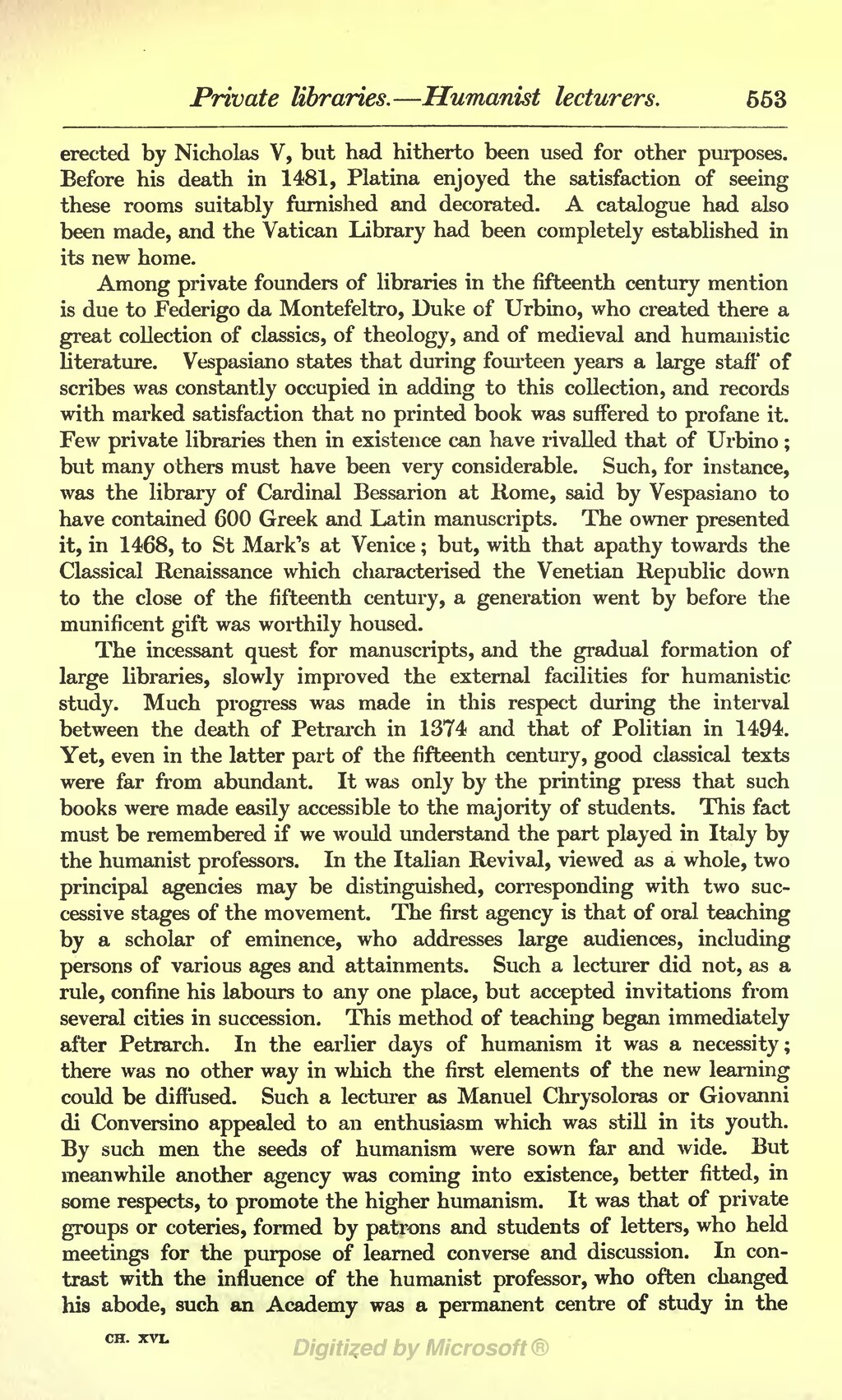erected by Nicholas V, but had hitherto been used for other purposes. Before his death in 1481, Platina enjoyed the satisfaction of seeing these rooms suitably furnished and decorated. A catalogue had also been made, and the Vatican Library had been completely established in its new home.
Among private founders of libraries in the fifteenth century mention is due to Federigo da Montefeltro, Duke of Urbino, who created there a great collection of classics, of theology, and of medieval and humanistic literature. Vespasiano states that during fourteen years a large staff of scribes was constantly occupied in adding to this collection, and records with marked satisfaction that no printed book was suffered to profane it. Few private libraries then in existence can have rivalled that of Urbino; but many others must have been very considerable. Such, for instance, was the library of Cardinal Bessarion at Rome, said by Vespasiano to have contained 600 Greek and Latin manuscripts. The owner presented it, in 1468, to St Mark's at Venice; but, with that apathy towards the Classical Renaissance which characterised the Venetian Republic down to the close of the fifteenth century, a generation went by before the munificent gift was worthily housed.
The incessant quest for manuscripts, and the gradual formation of large libraries, slowly improved the external facilities for humanistic study. Much progress was made in this respect during the interval between the death of Petrarch in 1374 and that of Politian in 1494. Yet, even in the latter part of the fifteenth century, good classical texts were far from abundant. It was only by the printing press that such books were made easily accessible to the majority of students. This fact must be remembered if we would understand the part played in Italy by the humanist professors. In the Italian Revival, viewed as a whole, two principal agencies may be distinguished, corresponding with two successive stages of the movement. The first agency is that of oral teaching by a scholar of eminence, who addresses large audiences, including persons of various ages and attainments. Such a lecturer did not, as a rule, confine his labours to any one place, but accepted invitations from several cities in succession. This method of teaching began immediately after Petrarch. In the earlier days of humanism it was a necessity; there was no other way in which the first elements of the new learning could be diffused. Such a lecturer as Manuel Chrysoloras or Giovanni di Conversino appealed to an enthusiasm which was still in its youth. By such men the seeds of humanism were sown far and wide. But meanwhile another agency was coming into existence, better fitted, in some respects, to promote the higher humanism. It was that of private groups or coteries, formed by patrons and students of letters, who held meetings for the purpose of learned converse and discussion. In contrast with the influence of the humanist professor, who often changed his abode, such an Academy was a permanent centre of study in the
